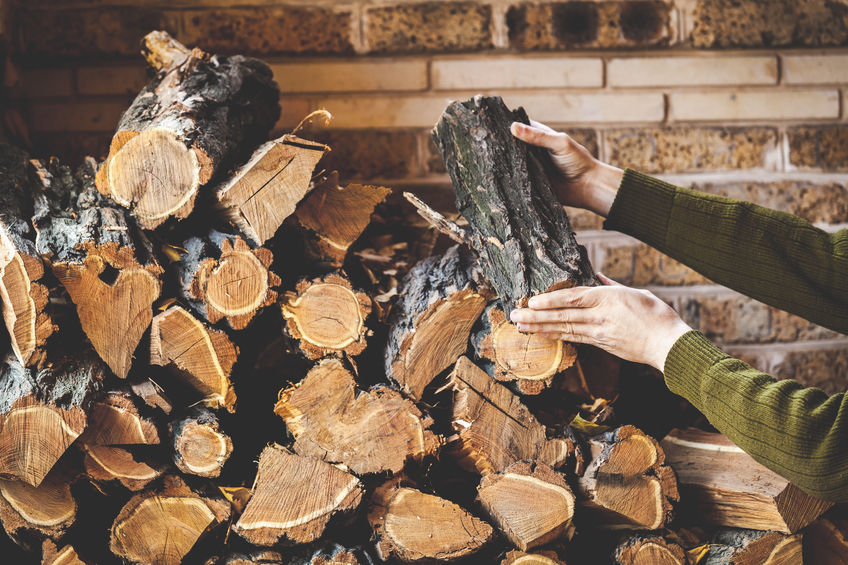Connecticut sustained damaging weather this year that brought down a lot of trees. For people that have fireplaces, wood stoves or wood burning fireplace inserts this means FREE fuel. With all the excitement of saving money on your energy bills there are a few steps to follow to make sure your appliance is as efficient as possible.
Fresh Cut Wood – Once you have split your wood its time to store it. To properly season wood, it should be stored covered and elevated for 6 months or more. If you choose to store outside, stack the wood on pallets and secure a tarp over the top during rain or snow to protect it. Take the tarp off during sunny weather for the water to evaporate out of the wood. If you have space, a wood shed with a roof will help protect the wood from rain and snow. It is important to remember that once your wood is seasoned it can become wet wood again if it is exposed to rain and snow.
The storage process is the most important step in burning efficiently and safely. Moisture content is very important with wood burning. Fresh cut wood has about 45% water content. Burning wood at this point will result in a large amount of acidic water being taken up your flue and creosote (black glass looking soot build up) will form on the inside of your appliance, fireplace firebox and flue lining.
After splitting and seasoning your wood, don’t forget to collect the left over twigs and branches. Smaller pieces like this make great kindling for starting your fires. Don’t forget to use screens in front of your fireplaces and burn your stoves with the doors closed. Having smoke detectors and carbon monoxide readers in the home is a must to keep your family safe and healthy. Happy burning season!







